Every Iranian city has its unique local wares. The most well-known Iranian mementos, which are typically bought by foreign tourists, are items crafted with tremendous work and the love and passion of their makers. Isfahan, known as “Half of the Globe,” was one of the most magnificent cities in the entire world, and many travelers and ambassadors praised it in their trip writings.
The royal city of Isfahan, which is a must-see while visiting Iran, is recognized for its great art and handicrafts, as well as its history and exquisite architecture. It is also listed as a global handicraft city. There are many artisans and artists working in Isfahan today, creating priceless handicrafts in old-fashioned workshops and selling their creations in the marketplace. Let’s check out the famous Isfahan souvenirs for your family and friends.
Isfahan Edible souvenirs
Isfahan Souvenirs that are edible are something worth considering because of the wide variety of tasty and unique delicacies. Here are a few of the most well-known:
1.Gaz
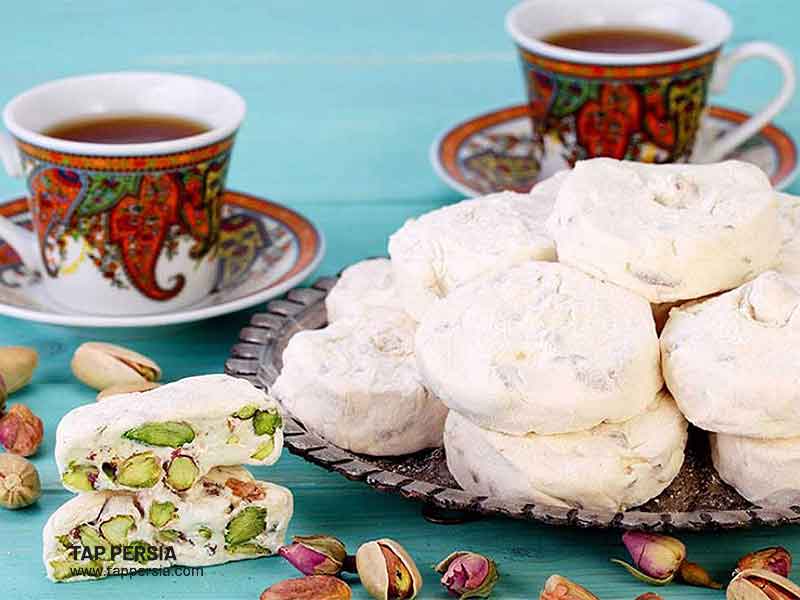
One of Isfahan’s souvenirs that is most well-known is the gaz. The origins of this delicious memento go back 400 years. In Iran, the Safavid dynasty ruled during this time. There are many different types of gas and gas brands available today. Glucose, egg white, sugar, rose water, honey, and almonds are the major components of Gaz. As a result, one of Gaz’s variations is in the kind and proportion of nuts it contains. pistachios and almonds are two of the most prevalent nut varieties in Gaz.
2.Poolaki
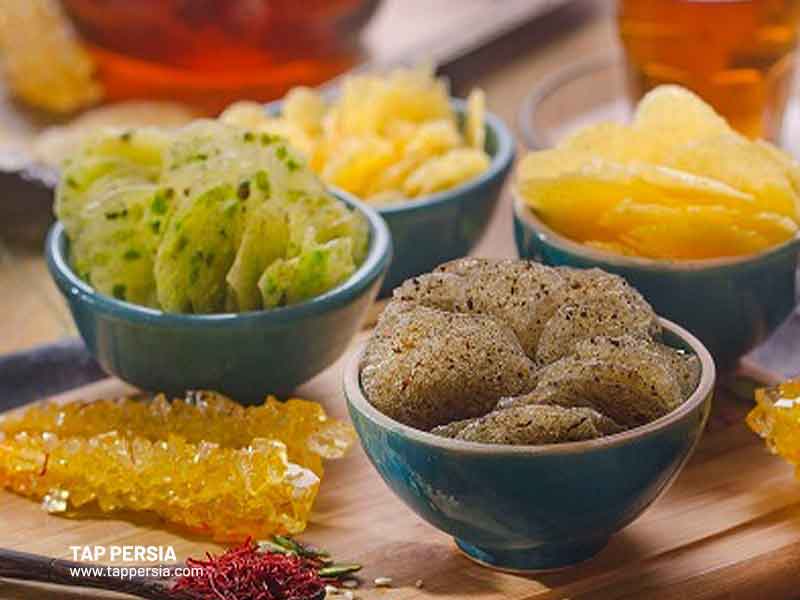
Poolaki is one of the best Isfahan souvenirs that is quite similar to Nabat. As a result, it is a form of confectionery with a coin shape. It resembles a fish scale in that it is incredibly small and thin. Interestingly, the Persian word for scale is Poolak. It is known as Poolaki for this reason. Persians enjoy poolaki with tea, similar to Nabat. The syrup used to make Nabat and Poolaki is the same. Locals in Isfahan enjoy eating poolaki instead of sugar. They consider it to be a more wholesome way to sweeten their tea. There are several varieties of Poolaki made from a variety of components.
3.Sohan Asali (Honey Sohan)
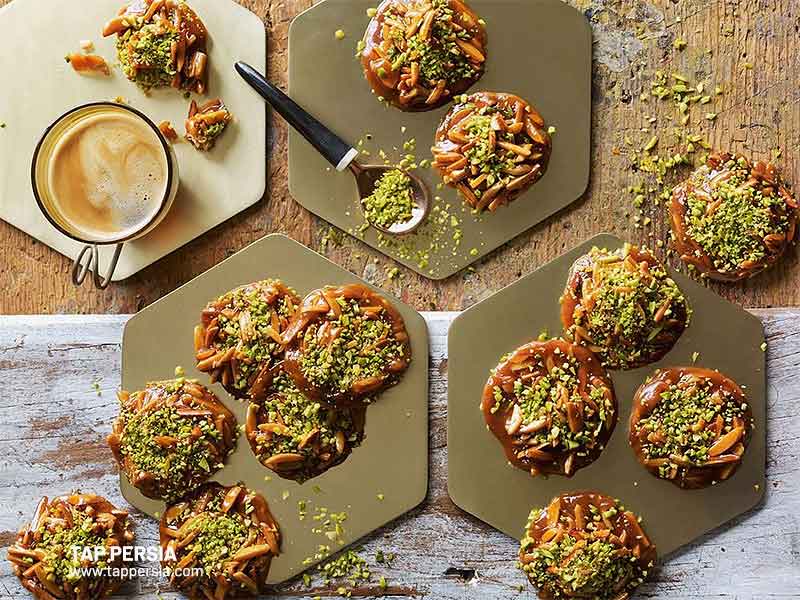
Sohan asali is one of the top Isfahan souvenirs that is made using Isfahan honey, butter, pistachio slices, sugar, almond and rose water, water and brewed saffron. They are typically rounded, and before they set, ground pistachios are used to garnish the top. This chewy, sweet treat is a hallmark of the Persian New Year and is sometimes modified by the addition of flavorings, more nuts, or flavored honey. Sohan asali comes in a variety of varieties. Some are cut into rectangular or square slices or circular sheets.
4.Fereydoun Shahr Honey

A city in Iran’s western Isfahan province, Fereydoun Shahr serves as the county seat for the same name. The Zagros mountain range is where it is located.
Perhaps few people are aware that Isfahan’s Fereydoun Shahr honey is among the best in the nation.
The honey produced is so wonderful and of such extraordinary quality because of plant diversity, the presence of medicinal plant species, and the avoidance of the use of toxins and fertilizers in their growth.
5.Korki Sweet
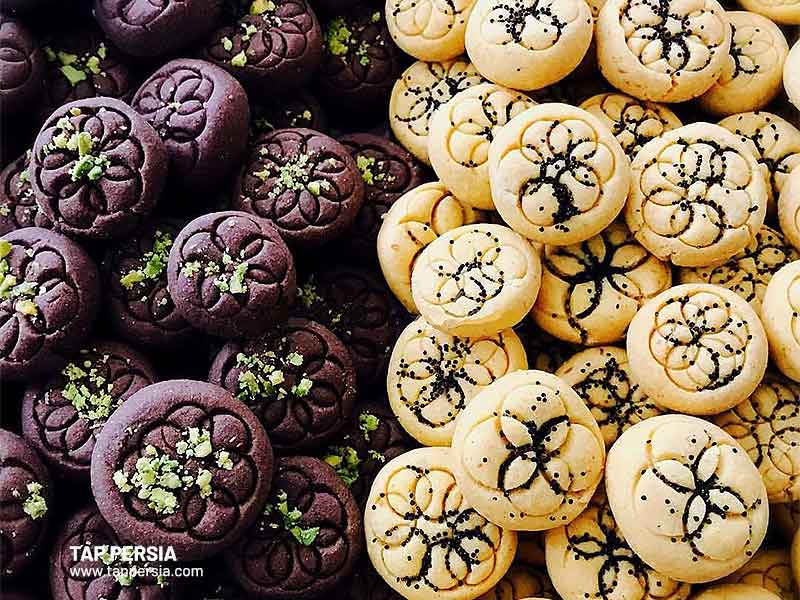
The city of Fereydoun Shahr, which serves as the county seat for the same name, is located in Iran’s Isfahan province’s western region. Located inside the Zagros mountain range. Perhaps not many people are aware that the honey produced in Isfahan Fereydoun Shahr is among the best in the nation.
The honey produced here is one of the best Isfahan souvenirs and is so wonderful and of such extraordinary quality because of plant diversity, the presence of species of medicinal herbs, and the lack of use of fertilizers and pesticides in their growth.
6.dough gooshfil
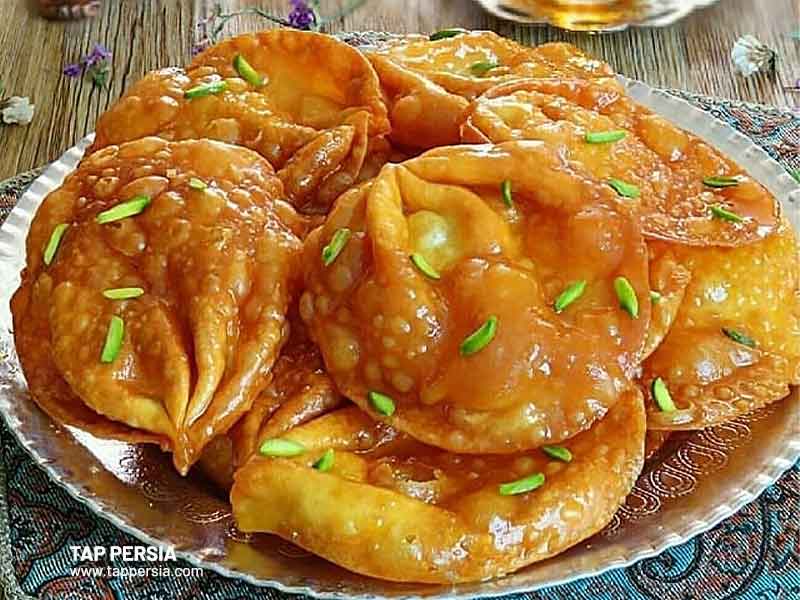
This strange and delicious food is made in honor of Isfahan. In Iranian pastry stores during Ramadan, you may get gooshfil alongside Zolbia and Bamiyah, two other delectable pastries. It is made using yogurt, eggs, saffron, flour, and cardamom. They first mix the ingredients together to produce a paste, which they then cook in oil. Finally, they offer local salty-sour Doogh with Goshfil that has been covered in sugar syrup (yogurt drink). In addition, people in Isfahan consume baklava with doogh. Do not skip sampling this unique and intriguing combo if you are visiting Isfahan.
7.Fereni (Starch Pudding)
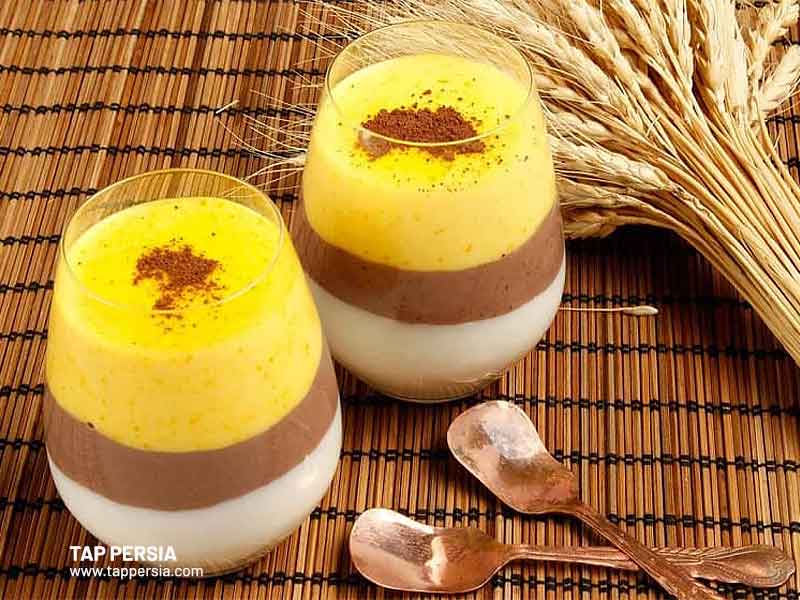
One kind of porridge is called Isfahani fereni. It is one of the garnished porridges available in Isfahan’s neighborhood restaurants. Locals typically eat Fereni for breakfast or dinner. Overall, the dinner is straightforward and light. A hot bowl of Fereni may warm your day on a chilly winter day. Apart from that, Fereni is a nutrient-rich food. Flour or starch is Fereni’s primary component.
Locals in Isfahan couple their Fereni with a substance known as Shireh. Shireh is actually grape or date syrup. The flavor of Fereni stands out thanks to these syrups. Since the Fereni without syrup has no sugar, it is ideal for persons with diabetes or who don’t consume a lot of sugar. In Isfahan, there are particular dairy shops where you may get different sizes of Fereni or other kinds of porridge.
Isfahan Handicrafts
Isfahan is famous for its beautiful artwork due to its artistic spirit and perfect attention to detail. Here are some of the most popular Isfahan souvenirs for those in love with unique handicrafts:
8.Ghalamkar Fabrics
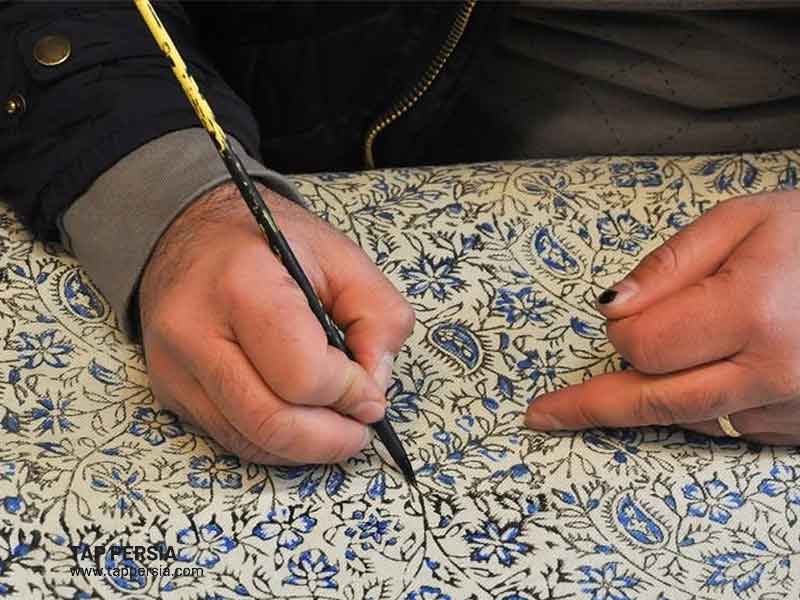
One of Isfahan’s primary handicrafts, the Ghalamkar cloth(Ghalamkari), has been made there since the Mongol dynasty. This craft entails using hand-carved wooden stamps to imprint floral and mythological designs on cotton fabric. Traditionally used as tablecloths, Ghalamkar textiles are now being used to make purses, blouses, and home décor items like curtains and pillows. If you’re searching for a lightweight, less ornate souvenirs, Ghalamkar cloth is a fantastic option.
9.Mina Kari (enameling)
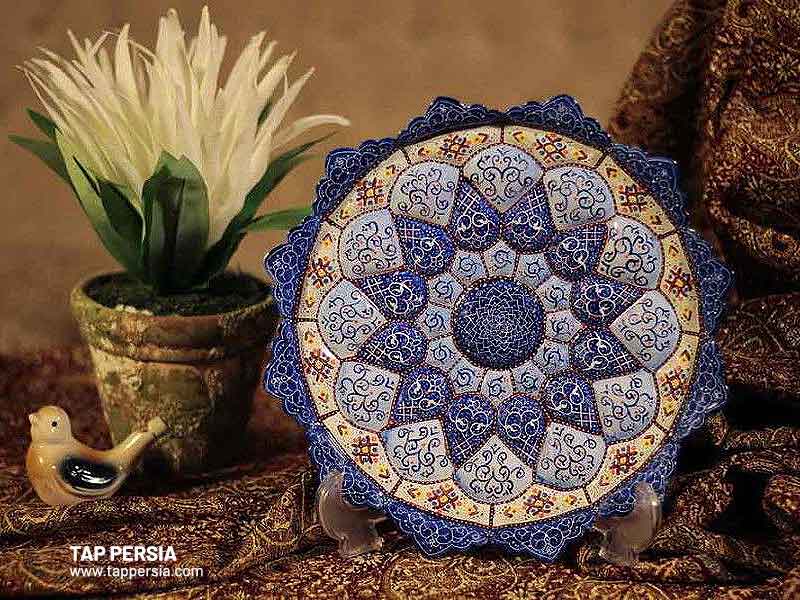
As the art of heaven, Mina Kari (Mina craft) involves coating copper, gold, and silver items like vases and plates with a layer of unique glaze before they are baked. The glaze is typically decorated with extremely fine floral and arabesque designs and is usually turquoise or Persian blue in color. Mina Kari is thought to have been practiced in Iran for at least 5000 years, and over the centuries, Isfahan’s artists have helped to popularize this art. This kind of handcraft is a great option to purchase in Isfahan as one of the greatest Isfahan souvenirs.
10.Kashi Kari (Tiling)
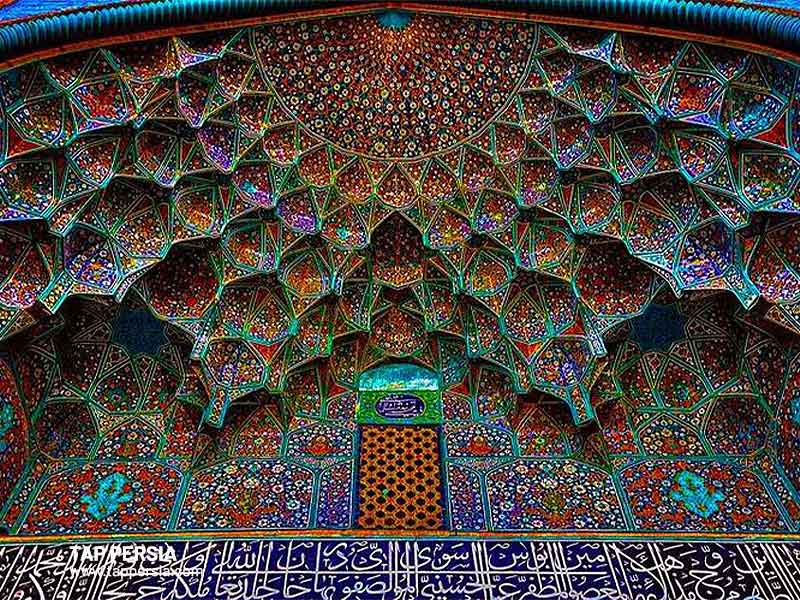
The earliest tiles in Isfahan are cyan tiles used to embellish historical inscriptions on minarets from the Seljuk era. Building Kashi Kari is really the art of fusing and assembling various tiles; multicolored tiles with various designs and patterns that give the building’s area a distinctive appearance. With the introduction of Islam as a religion and the development of Iranian-Islamic architecture, Kashi Kari, an Iranian art form, achieved its pinnacle.
This art is quite difficult, but it produces unexpected outcomes. The fifth essential step in decorating a structure is this art. Iran has a long history of using tile for architectural ornamentation, with Iranian Tile Work art dating back to 1500 B.C. Iranian structures from that time period may be seen to have beautiful and inlaid tiles, glazed bricks, and other building materials. So make sure to buy this because it’s thought of as one of the best Isfahan souvenirs.
11.Qollab Doozi
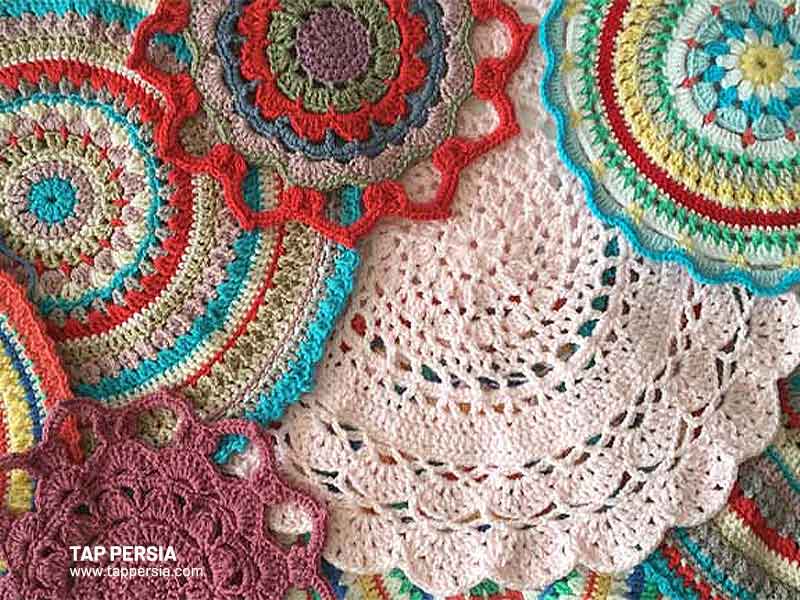
Isfahan women practice crocheting, embroidery, and other forms of this craft which are among the best Isfahan souvenirs. Handmade fabrics in a variety of colors and silk threads are the basic components used to create this stunning piece of art.
Some of them only perform basic embroidery, while others add additional designs to raise the cost of the finished item. Mahouti textiles are frequently used for crocheting.
12.Malileh Sazi
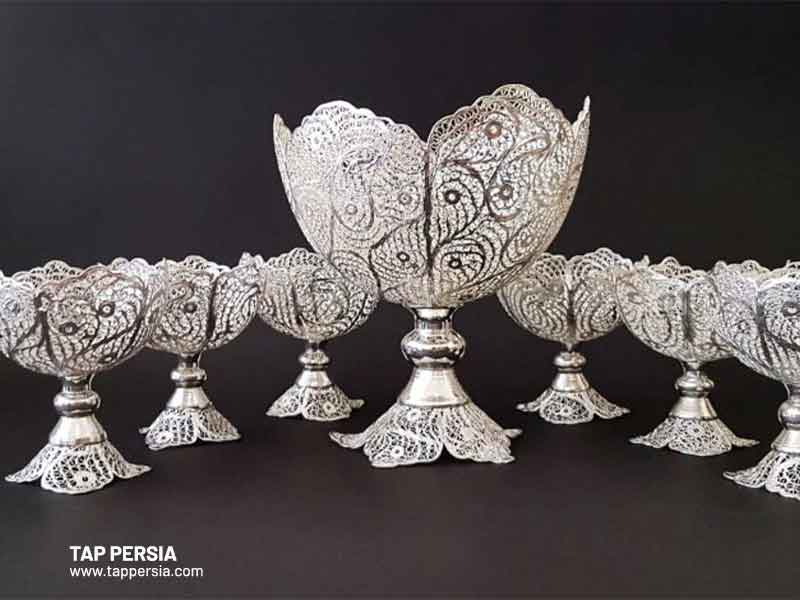
In Isfahan, silver jewelry has its own dedicated followers, and silver filigree (Malileh Kari) is also becoming increasingly popular among great Isfahan souvenirs.
This piece of art is the result of labor with gold, silver, and copper wires that are intricately interlaced on the mold of the desired product in the shapes of conventional and arabesque motifs with great care and aesthetic accuracy.
13.Qalam Zani (Etching)
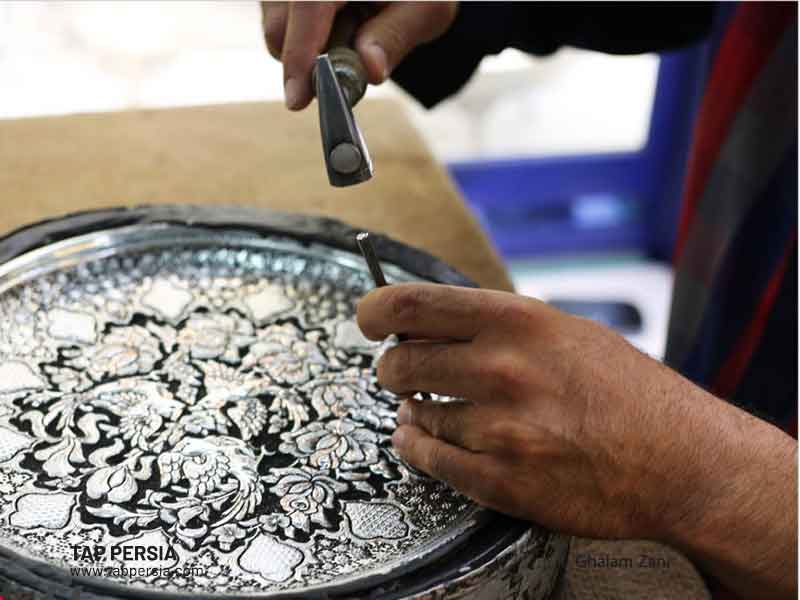
One of the most well-known Persian handicrafts and Isfahan souvenirs is “Qalam Zani,” along with “Mina Kari” and “Khatam Kari.” It’s a particular technique for engraving metal that may be used on materials like gold, silver, bronze, or copper. Metal may be adorned with lovely motifs and patterns by either hammering down the metal sheet’s two sides or shaving off small patches of the surface. Vases, boxes, bowls, and other metal objects have all been decorated using this old craft over the years. The Qalam Zani production center is still in Isfahan, where workers may still be seen at work in the bazaar’s back lanes.
14.Calligraphy Paintings
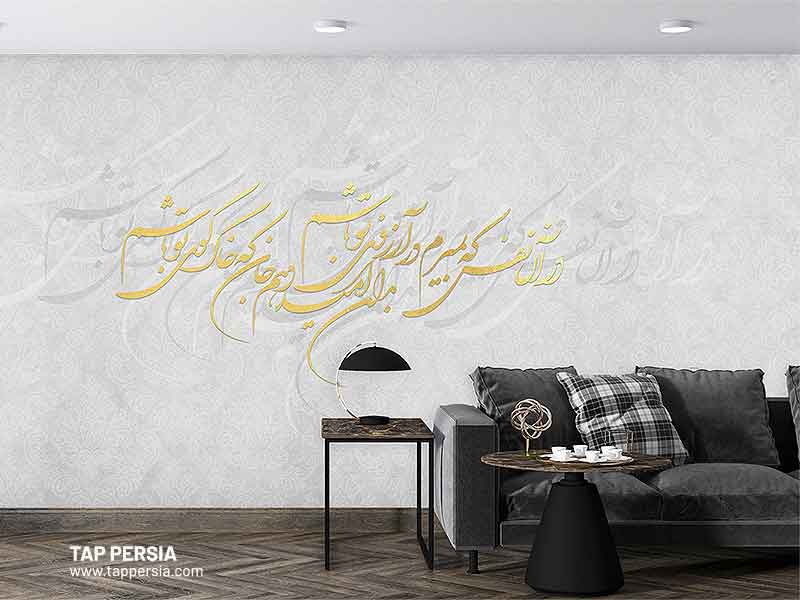
In all historical ages and periods, Isfahan has been the center of Iranian calligraphy. Isfahan has been home to several renowned calligraphers, including Mir Emad Hassani, Abdol Majid Taleghani, and others who have contributed to the development of the discipline.
You may also get one of the best Isfahan souvenirs by purchasing calligraphic artwork here. Elegance, accuracy, and expertise were employed to create the magnificent art pieces in these unrivaled mementos of Isfahan, making them extremely perfect and remarkable both aesthetically and technically.
15.Persian Carpet
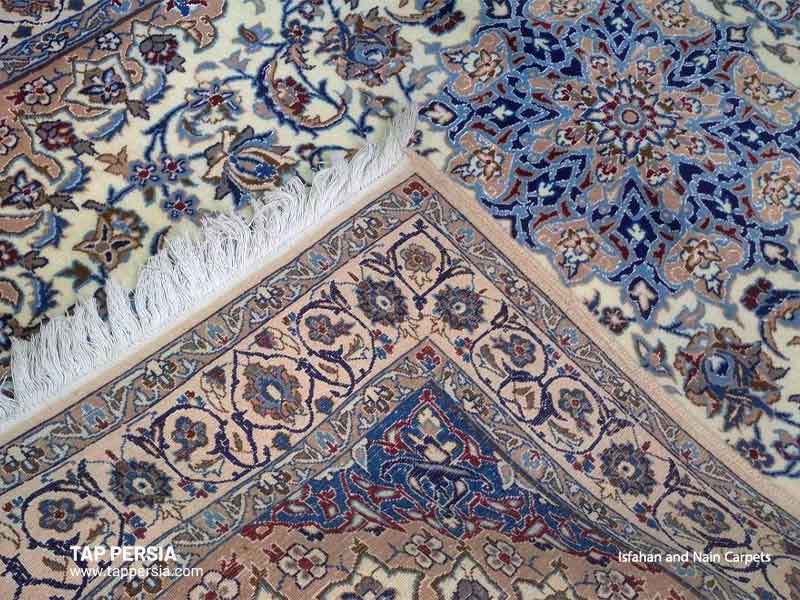
The most expensive and important Isfahan souvenirs are its handmade carpets, which are produced by hand. It is not an overstatement to say that these amazing Persian carpets, although quite expensive, are wonderfully beautiful. Perhaps it would be best to keep them for yourself rather than give them as a present.
Persian carpets and the weaving art of Isfahan are unique across the world. In the city of Isfahan, you may find valuable and exceptional examples of them.




Comment (0)